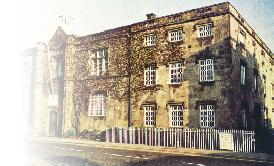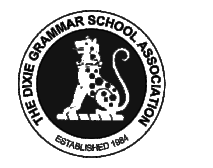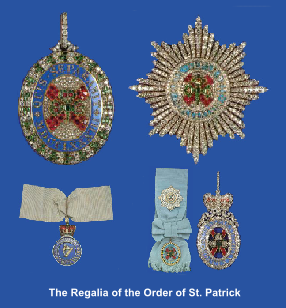



He retired to Abbot's Barton, Canterbury, where he died Dec. 18, 1909.
There is a fascinating tale concerning his son, Francis. Francis Bennett-
In February 1907 Bennett-
The discovery of the theft of the Jewels caused great concern to government, and indeed, King Edward VII was particularly angered, as he was within days of visiting Ireland and intended to wear the regalia when investing a knight of the Order of St Patrick. To this day, they have never been found!
But in 1914 at the age of 63, when he was too old to take part in the War, he took on the Presidency which carried with it an ex officio appointment as a Trustee of the British Museum. He spent the War successfully fighting the War Office who wanted to commandeer the museum for the Air Board. He thus played a major role in the history of the British Museum as well as the history of the Ashmolean Museum. Sir Arthur Evans FSA died in 1941. He left part of his estate to the Boy Scouts and Youlbury Camp, his one time home, is still available for their use.
Let’s now look at the life of Sebastian Evans. Sebastian was born in 1830, the youngest son of Rev. Arthur Benoni. He was admitted to Emmanuel College, Cambridge, as a Dixie Scholar on April 19 1849. He Matriculated at the end of the Michaelmas Term that year and gained his B. A. degree 1853. He was admitted at Lincoln’s Inn in 1855, the same year that he was appointed Secretary of the India Reform Association, a position from which he resigned in 1857. Also in 1857 he married Elizabeth, daughter of Francis Bennett Goldney, one of the founders of the London Joint Stock Bank. His son, Francis, who later became the M.P. for Canterbury, was to assume the surname of Bennett Goldney.
1857 also saw Sebastian become Manager of the Art Department of the glass works of Messrs. Chance & Co. at Oldbury, designing many stained glass windows, including one illustrating the Robin Hood legend, for the International Exhibition in 1862.
In 1867, he joined the Birmingham Daily Gazette as editor, but left within three years to pursue his legal career. When the editor of the Daily Gazette died in 1886, Evans resumed the editorship. He wrote leading articles for The Observer, and contributed articles and stories, chiefly mystical, to Macmillan's and Longman's Magazines.
He was awarded L. L. D., Doctor of Law in 1868 and was called to the Bar in 1873 on the Birmingham and Oxford Circuits.
In 1878, Sebastian shared in the foundation of The People, a weekly Conservative newspaper, and he edited it for the first three years.
His versatility and charm brought him many friends of varied types, including William
Makepeace Thackeray, Huxley, Cardinal Newman, Matthew Arnold, Joseph Chamberlain,
Edward Burne-
He pursued his artistic and poetic interests and exhibited pictures at the Royal Academy and elsewhere. You may be familiar with the sketch he did when he was eighteen which was presented to St. Peter’s Church, Market Bosworth. He published several collections of poems, most notably Brother Fabian's Manuscript and other Poems in 1865.